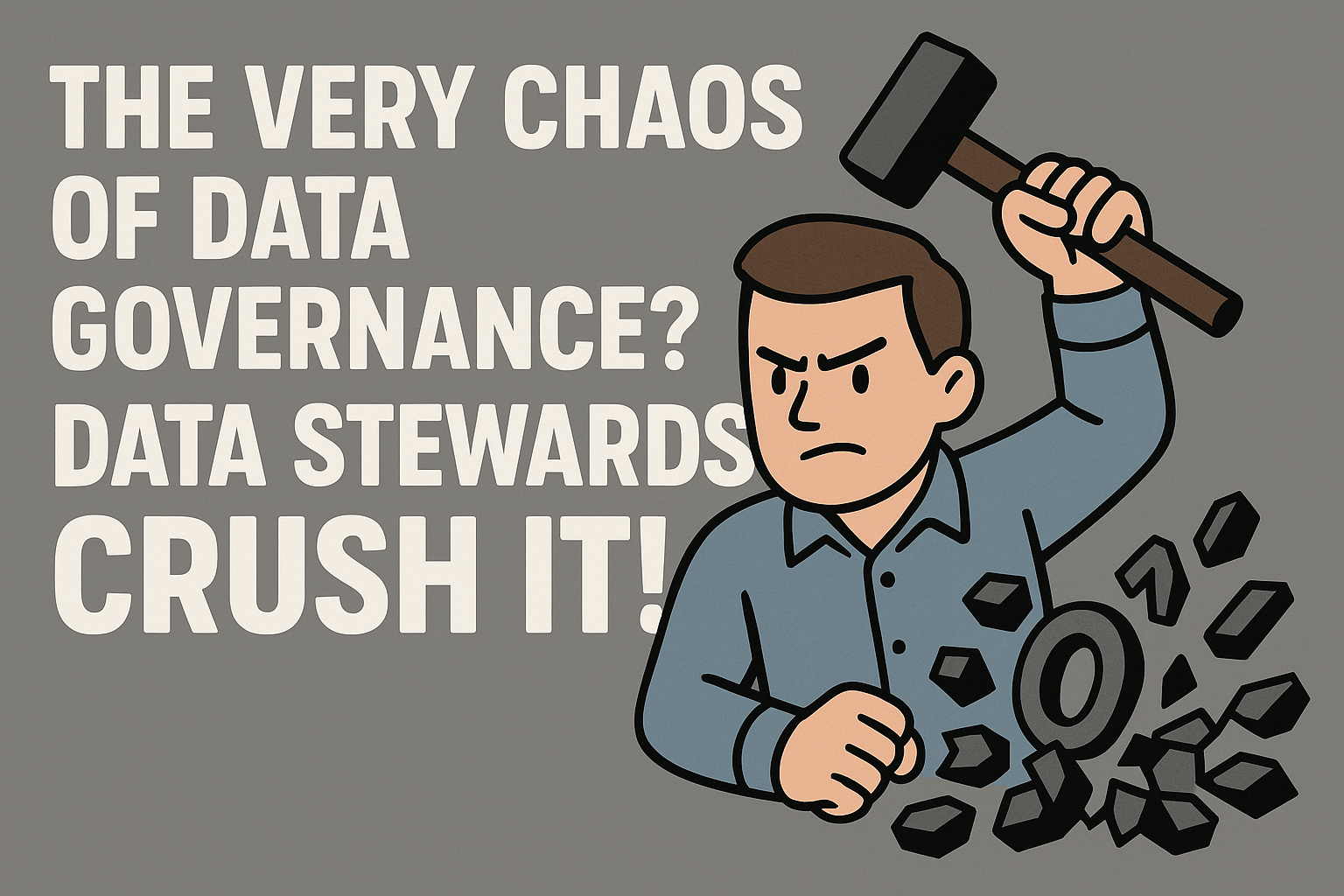Aligning Data Governance with Business Goals
Data governance can’t operate in isolation—it must align with what the business wants to achieve.
Think of it like dancing with a partner—you need to know:
“Do you prefer fast or slow music?”
“Are we moving in the same direction?”
If the company wants to understand customers better or reduce costs, data governance must support those objectives.
Example 1: Driving More Customers to a Café
Imagine you own a café, and your goal is:
“Let’s attract more customers!”
Data governance can help by:
Organizing customer preference data—who likes coffee, who prefers tea.
Tracking repeat orders—to personalize the customer experience.
A small café I know did exactly this. They tracked customer drink preferences:
“This customer always orders a latte.”
So, they prepared it in advance, and when the customer walked in, they said:
“Your usual latte, ready to go!”
The customer loved the service and became a loyal regular.
“This place really knows me—I’ll come back more often!”
As a result, sales increased significantly!
Example 2: Cutting Costs by Reducing Redundant Data
What if the company’s goal is:
“Let’s cut costs!”
If duplicate data is wasting server storage and IT costs, data governance can:
Find and eliminate redundant data.
Optimize storage policies.
A company I worked for had this exact issue. They analyzed their storage usage and realized:
Huge amounts of data were duplicated across systems.
By cleaning up the redundancy, they cut server costs in half.
The CEO’s reaction?
“This is amazing! We’re saving so much money!”
1 How to Align Data Governance with Business Objectives
To set the right goals, talk to key stakeholders:
Executives want increased revenue.
Operations teams want to work more efficiently.
The key is to find a balance and propose solutions like:
“By cleaning customer data, we can increase repeat sales and reduce complaints.”
“By eliminating duplicate data, we can cut costs and improve system performance.”
2 The Power of a Clear Goal
My friend Jake had one simple goal:
“Bring in more customers.”
So, he started tracking customer names and favorite menu items.
Within a month, customer visits doubled—and he thanked me:
“Wow, this actually works! The right goal makes governance powerful!”
3 Aligning Data Governance with Business Goals: Setting Metrics and KPIs.
Data governance cannot function in isolation—it must align with business goals.
Imagine trying to dance with a partner—you need to adjust your movements based on their rhythm.
Similarly, data governance must adapt to help the business achieve its objectives.
For example, if a company wants to:
- Understand customers better → Organize customer preference data
- Reduce costs → Eliminate redundant data
- Increase revenue → Use data-driven personalized recommendations
These goals need to be converted into measurable KPIs so data governance can actively contribute to business success.
| Business Goal | How Data Helps | What Governance Supports |
| Understand customers better | Organize preference data | Ensure high data quality |
| Reduce costs | Eliminate redundant data | Use tools to increase efficiency |
| Increase revenue | Implement personalized recommendations | Set policies to guide data strategy |
3.1 Why Setting Metrics and KPIs Matters
Business goals are often too abstract, such as:
- “Let’s increase revenue!”
- “We need more customers!”
These statements provide direction but lack specificity. Without clear measurements, execution becomes difficult. This is where metrics and KPIs come into play.
Metrics transform abstract goals into measurable indicators. For example:
- “Increase customer visits” becomes “Increase daily average visitors from 50 to 100.”
- “Reduce costs” becomes “Cut server expenses by 50% through data optimization.”
Once KPIs are defined, data governance ensures:
- Accurate data collection for measurement
- Reliable processes to maintain data integrity
- Structured reporting to track progress
Real-World Example: A Café Optimizing Customer Traffic
A café owner set a goal: “Increase customer traffic.”
To make it measurable, they set a KPI: “Increase monthly customer visits from 200 to 400.”
When they analyzed their data, they noticed fluctuations:
- Mondays had significantly fewer visitors compared to other days.
Through further analysis, data governance revealed:
- The primary reason was that nearby office workers were too busy on Monday mornings.
To address this, they launched a “Monday Takeout Discount” campaign.
As a result, Monday sales improved, and overall customer visits increased.
This success was possible because:
- The goal was transformed into a measurable KPI.
- Data governance ensured the right data was collected and analyzed.
Another Example: A Company Reducing Costs Through Data Optimization
A company aimed to “reduce costs” but lacked specific targets.
After discussion, they set a KPI: “Reduce server costs by 50%.”
The data governance team then focused on:
- Identifying and removing redundant data
- Optimizing storage policies
By eliminating unnecessary data duplication, the company significantly reduced its server costs.
The CEO, initially skeptical, was impressed:
- “Now we have a clear impact! We can see exactly how governance helps the bottom line.”
3.2 Metrics and KPIs as the Bridge Between Business and Governance
Well-designed metrics act as a bridge between business goals and data governance. Without them:
- The café would not have identified the Monday traffic issue.
- The company might have struggled to track cost reductions.
To establish effective metrics, follow these steps:
- Clearly define the business goal.
- Convert it into a measurable KPI.
- Ensure governance processes support accurate measurement.
For example, a company aiming for “20% revenue growth while reducing data processing time by 30%” should:
- Define measurable KPIs such as “Increase monthly revenue from $100,000 to $120,000.”
- Track operational KPIs like “Reduce average data processing time from 10 hours to 7 hours.”
- Implement governance controls to ensure data accuracy.
A structured approach ensures that governance is not just about managing data but actively driving business success. The clearer the goals and the more precise the KPIs, the stronger the impact of data governance.

